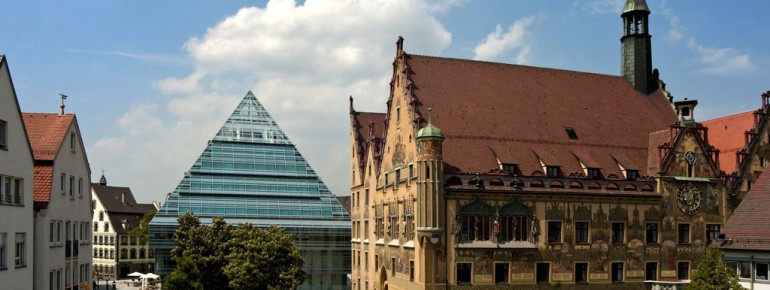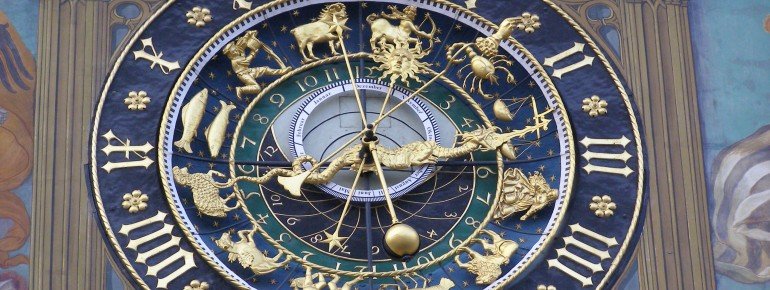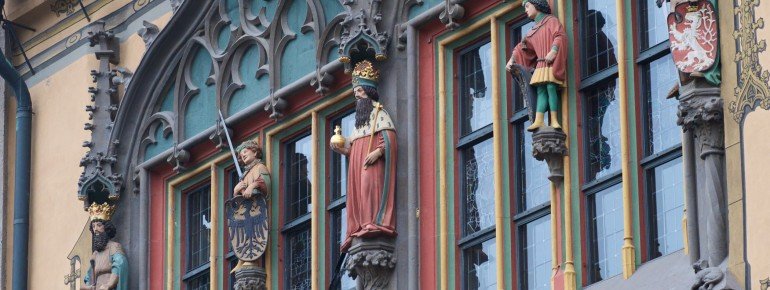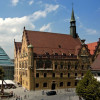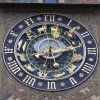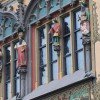Contents
Description
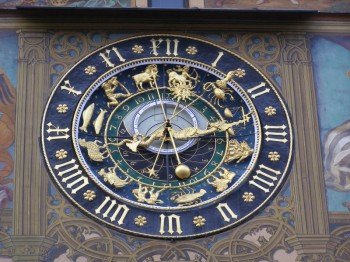
The historic Ulm City Hall is located close to the cathedral and can be recognized from afar by its striking exterior paintings from the early Renaissance period. Besides these, the Gothic council hall and the astronomical clock from the 16th century are among the most important features of the building. The staircase also contains a replica of an aircraft by Albrecht Ludwig Berblinger, who went down in history as the "Schneider von Ulm". Although he was a full-time master tailor, his real interest throughout his life was in mechanics.
The astronomical clock
The famous astronomical clock, which is attached to the Ulm City Hall, is the most complex construction of its kind in southern Germany, with five movable elements. When looking at it, the layman first asks himself what all these hands are good for. Because with a normal clock the astronomical clock in Ulm has only the hour hand in common, which points as stretched out hand to the respective hour.
If one imagines the clock as planet earth, it becomes clear that the sun, moon and stars move clockwise around it. The clock thus represents the prevailing idea until the beginning of the 16th century that the sun orbits the earth. The pointer with the golden sun always indicates the actual current position of the sun: At noon he's at the top, at midnight he's at the bottom.
On the movable zodiac ring with gilded constellations the course of the stars can be read. Each day the zodiac ring rotates four minutes faster than the sun hand. This falls back in the course of a month to the next sign of the zodiac and always shows the current constellation.
The moon hand needs 50 minutes longer than the sun hand for a complete revolution. This is because the pointer indicates the movement of the moon around the earth. This lasts from full moon to full moon in each case 29 days, twelve hours, 44 minutes as well as 2.9 seconds. Viewed as a whole, the moon pointer reflects the position of the moon relative to the sun and the zodiac. However, in contrast to the sun pointer, it does not represent the current position of the moon in the firmament. But the momentary moon phase can be traced: The moon ball attached to the pointer is movable and has a black and a golden half. When turning from black to gold within 14 days and vice versa, the sphere symbolizes the phases of the waxing and waning moon.
The calendar ring is divided into months and has a line for each day of the year. It is coupled to the zodiac ring by two crossing poles and moves with it. On the days of the summer and winter solstice, the spokes of the zodiac cross the calendar ring. So you can also read the seasons on the clock.
Historical Information
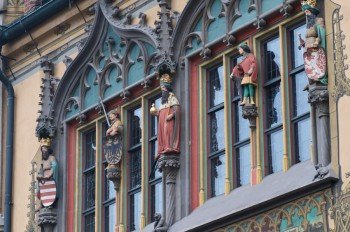
The oldest part of the town hall is the southeastern main building. It was built in 1370 as a "new department store" and was first called the town hall in 1419. In the course of the 15th century, the Gothic council hall received framed windows on the south side with six electoral figures and double windows on the east side.
The astronomical clock was attached to the town hall around 1520. The facade paintings were also extended to the old building. They show doctrinal images of various virtues, commandments and vices. The paintings still visible today date back to 1900 - this year the painting, which was partially destroyed by the weather, was restored or recreated.
In 1944, the interior of the Ulm Town Hall was largely destroyed in a fire. The entire ground floor as well as the first upper floor in the south wing were not damaged.
How to get there
On foot:
As the Ulmer Rathaus is located directly on the market square, it is easiest to reach on foot. Those who park at the main station or arrive there by train will be at the town hall in 15 minutes.

